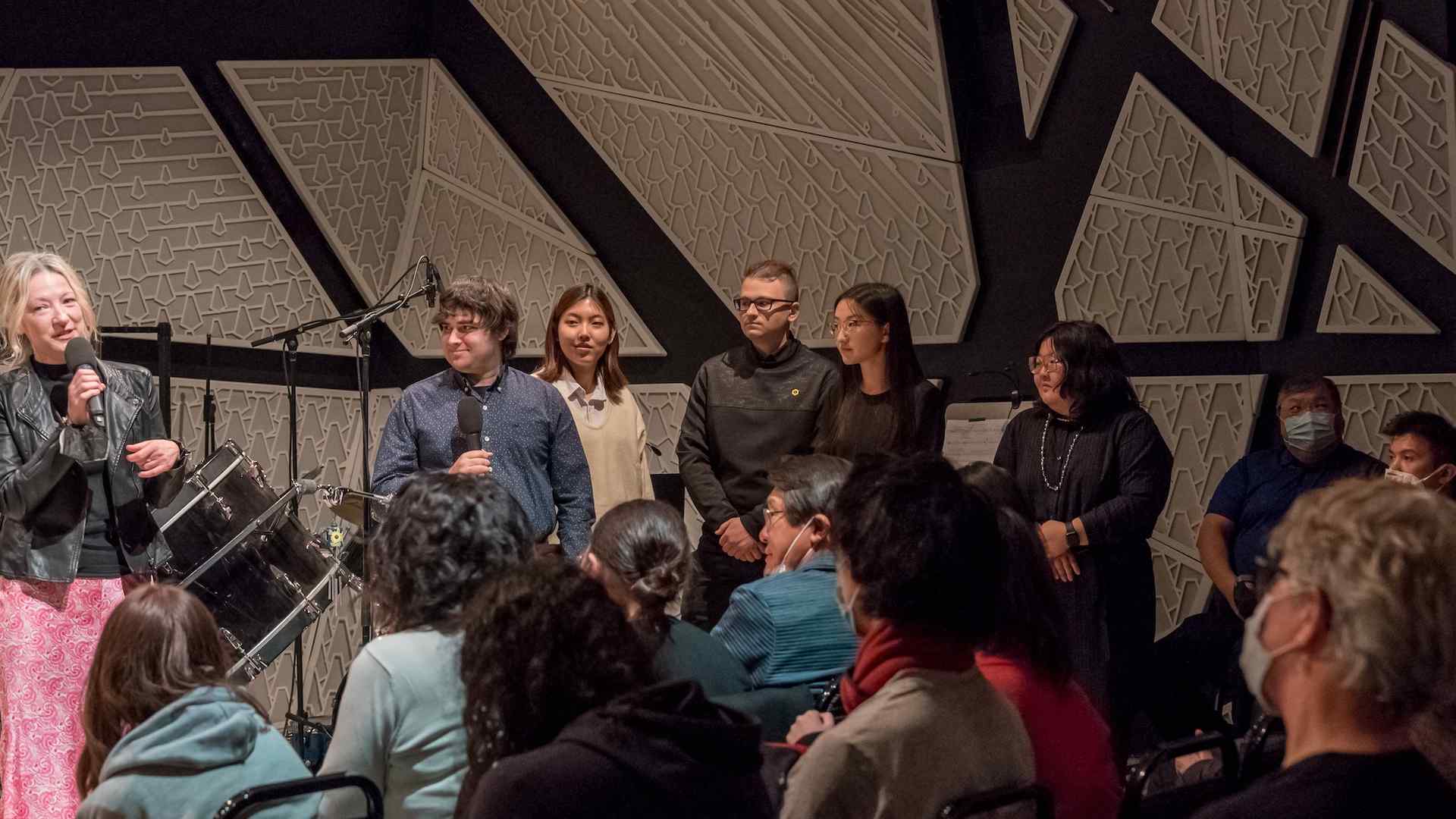
By Aidan Gold
The Juilliard Blueprint fellowship has since 2019 given Juilliard student composers and alumni an opportunity to work with the arts organization and Brooklyn music venue National Sawdust in the creation, production, and performance of new projects. It is led by Paola Prestini (BM ’98, MM ’00, composition), co-founder and artistic director of National Sawdust. For the fellowship, participants are paired with composers working in the field, who mentor them and help in the process of designing and realizing the projects. In addition, artists and staff at National Sawdust present professional development seminars and lectures that give the students tools to navigate being a composer in today’s world. The completed works are premiered at the end of the year at a concert at National Sawdust with their resident ensemble. This year, I’m one of five composers participating. The others are BCJ exchange student Nicole Balsirow (MAP ’20), master’s student Sia Uhm, Lingbo Ma (MM ’21), and Eugene Astapov (MM ’13). The mentors are Laura Kaminsky, Nathalie Joachim (MAP ’96; Pre-College ’01; BM ’05, flute), Rebekah Heller, faculty member Amy Beth Kirsten, and Reena Esmail (BM ’05, composition). And the concert takes place December 11 at 7pm.
My Blueprint project is a multimedia music-theater performance piece called Dividing Light. It explores the theatricality of performing, interaction, and narrative constructed through the “physicalization” of the performance stage. I created a scenario in which performers explore the space around them as if they were a character exploring an alien planet, interacting, conversing, engaging, and conflicting with the characters they meet in that world. The piece tells a short story about these characters in this world and their adventures navigating it. The lighting, electronics, and reverberation of the space realized through the National Sawdust Meyer Sound’s Constellation acoustic system all become forces that affect the performers directly—changing reverb levels makes it harder for them to stay musically together as an ensemble, and as the lighting expands and shrinks the musicians must move to stay out of the dark.
My Blueprint mentor for this project was the composer and director Amy Beth Kirsten (who has now also joined the composition faculty). She specializes in “composed theater”—a hybrid art in which theatrical effects and gestures are treated compositionally or musically. Her expertise in this area made her an inspiring and helpful mentor as I explored the embodied theatricality of musical performance. As I was developing the ideas for the piece in our sessions together, we would set up chairs, instruments, and music stands, and act out various sections, learning how the interactions would work physically. This proved invaluable not only for me to work through my ideas spatially but also for the musicians, who could use the videos we made of these mock interactions to understand what I was going for theatrically. I am incredibly grateful for her knowledge, expertise, vision, and support throughout this entire process. Dividing Light would not exist without her.
The professional development sessions and seminars that took place as part of Blueprint were also fascinating and insightful, addressing the contemporary composer’s career path from multiple different angles. Paola Prestini gave several lectures on how to put together large-scale collaborative and multimedia projects. Steve Smith, a music critic and writer for the New Yorker, talked with us about the relationship between composers and critics and how important it is to have people write about your work. We had a seminar on promotion and marketing in the age of social media with Zan Emerson and Alyana Vera, the marketing and design coordinators for National Sawdust. Additionally, Tiffany Soricelli gave a talk on financing yourself and your compositional projects. All these discussions brought practical aspects of being a composer to the forefront—concepts that I had little experience or knowledge of beforehand. Often, the traditional curriculum for a contemporary composer is filled with classes studying music itself and its history, but it usually does not include much discussion of how to practically be a composer today—how to support, advocate for, and finance yourself. These skills are essential to surviving and thriving in today’s new music community, and so having these opportunities to learn from experts in the field about these practical topics is one of the most crucial and invaluable parts of the Blueprint fellowship.
I am extremely grateful to be able to be a part of this program, now in its fourth year. All the mentorship, discussion, and support that Blueprint offers creates an ideal environment for the creation of exciting new collaborative musical projects. This program also helps connect Juilliard and its students to the broad and diverse New York new music scene, creating connections that will support composers and performers as they launch their careers.
Aidan Gold is in his second year of the composition doctoral program